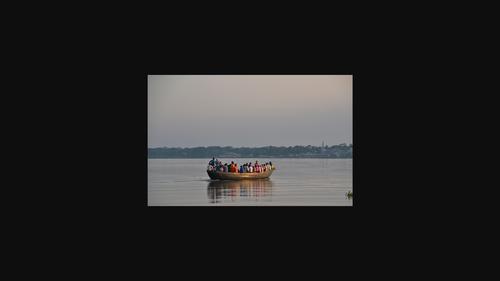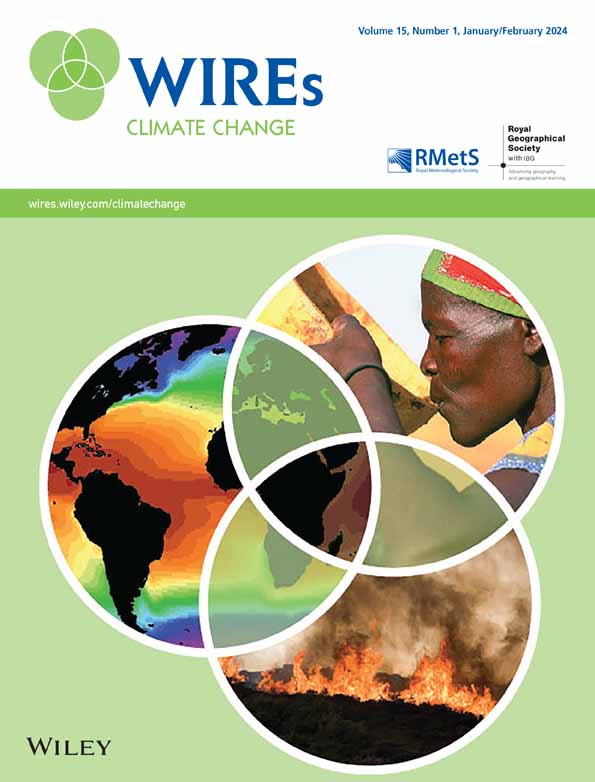谁是气候导致的受困人物?
IF 10.3
1区 环境科学与生态学
Q1 ENVIRONMENTAL STUDIES
引用次数: 3
摘要
许多人还记得上世纪90年代危言耸听的说法,即到2050年,多达10亿气候难民的人类浪潮将淹没“我们的”边境。到2011年,一个新的角色加入了讨论:被困人物。易受气候影响的人们将不再被迫搬迁,他们也可能最终无法搬迁。这篇综述考察了围绕被困人物的叙述。文章强调了被困人物的(1)特征,(2)地理位置,(3)故事讲述者。这些材料包括《2011年展望报告》、64篇英文同行评议期刊文章和7份《联合国气候变化框架公约》政策报告。文本分析进一步加深了我们对价值观的理解,这些价值观在更广泛的话语经济中塑造了被困人物的意义。在64篇文章中,48篇文章将被困人物定位在亚洲,34篇文章将被困人物定位在非洲。与此同时,大多数文章(总共62篇)是由欧洲研究机构的学者撰写的。研究表明,被困的人物,就像神话中的气候难民和移民一样,既是需要拯救的受害者,也是一种模糊的安全威胁。有计划的搬迁经常被提出作为一种有效的工具,以“移动”数字远离伤害的方式,这在伦理上是有问题的。本文还发现,在关于受困人群的论述中,出现了一系列二元对立,包括秩序-无序、自由-不自由、受害者-救世主。这表明,无论自由主义关于被困人口的论述显得多么善意,它仍然植根于需要批判性审查的权力关系中。本文章由计算机程序翻译,如有差异,请以英文原文为准。

Who is the climate‐induced trapped figure?
Many will remember the 1990s alarmist narratives of how a human tide of up to a billion climate refugees would flood “our” borders by 2050. By 2011, a new character joined the discourse: the trapped figure. No longer would climatically vulnerable people be forced to move, they could also end up immobile. This review examines the narratives that surround the trapped figure. The article highlights the trapped figure's (i) characterisation, (ii) geography, and (iii) storytellers. The material includes the 2011 Foresight Report, 64 English peer‐reviewed journal articles, and seven UNFCCC policy reports. The textual analysis furthers our understanding of the values that shape the meaning of the trapped figure within the wider discursive economy. Out of the 64 articles, 48 located the trapped figure in Asia, while 34 placed the figure in Africa. Meanwhile, the majority of articles—62 in total—were written by scholars based at European research institutes. The study shows that the trapped figure, much as the mythical climate refugee and migrant, is constructed as both a victim in need of rescuing and as an ambiguous security threat. It is ethically problematic that planned relocation was often put forward as an effective tool to “move” the figure out of harm's way. The review also found a range of binary opposites in the discourse on trapped populations, including those of order–disorder, freedom–unfreedom, and victim–savior. This suggests that however well‐intentioned the liberal discourse on trapped populations appear, it remains embedded in power relations which demands for critical scrutiny.
求助全文
通过发布文献求助,成功后即可免费获取论文全文。
去求助
来源期刊

Wiley Interdisciplinary Reviews: Climate Change
METEOROLOGY & ATMOSPHERIC SCIENCES-
CiteScore
20.00
自引率
2.20%
发文量
58
审稿时长
>12 weeks
期刊介绍:
WIREs Climate Change serves as a distinctive platform for delving into current and emerging knowledge across various disciplines contributing to the understanding of climate change. This includes environmental history, humanities, physical and life sciences, social sciences, engineering, and economics. Developed in association with the Royal Meteorological Society and the Royal Geographical Society (with IBG) in the UK, this publication acts as an encyclopedic reference for climate change scholarship and research, offering a forum to explore diverse perspectives on how climate change is comprehended, analyzed, and contested globally.
 求助内容:
求助内容: 应助结果提醒方式:
应助结果提醒方式:


